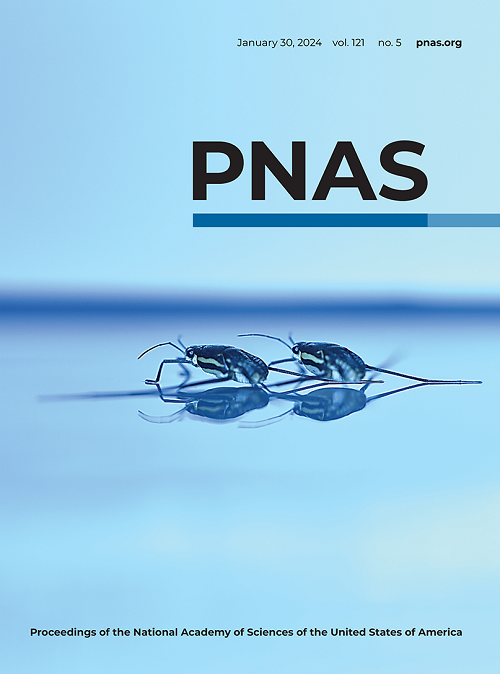体育锻炼激活PVN-NAc催产素回路,以缓解压力引起的抑郁样行为。
IF 9.4
1区 综合性期刊
Q1 MULTIDISCIPLINARY SCIENCES
Proceedings of the National Academy of Sciences of the United States of America
Pub Date : 2025-05-20
DOI:10.1073/pnas.2503675122
引用次数: 0
摘要
众所周知,体育锻炼可以减轻抑郁症,但其潜在的大脑机制尚不清楚。基于小鼠慢性约束应激模型,研究人员发现,4周的跑步机运动能深刻地维持伏隔核(NAc)的正常神经活动,并与预防抑郁样行为有关。在NAc中进行的微阵列分析显示,催产素(OT)受体表现出最显著的差异表达,这意味着OT信号在运动诱导的抗抑郁作用中发挥了重要作用。体内纤维光度法显示应激小鼠NAc中OT释放中断,室旁核(PVN)中OT神经元的活性及其对NAc的投射发生改变,并通过运动恢复。此外,我们发现PVN-NAc OT回路的激活可以阻止应激诱导的抑郁样行为。PVN-NAc OT回路的额外抑制阻断了应激小鼠运动的抗抑郁作用。总之,我们的研究结果揭示了PVN-NAc OT回路在调节抑郁样行为中的关键作用,这是运动抗抑郁作用所必需的。这种神经回路机制为运动时大脑网络的适应提供了解释,也为抑郁症的治疗提供了一个有希望的治疗靶点。本文章由计算机程序翻译,如有差异,请以英文原文为准。
Physical exercise activates a PVN-NAc oxytocin circuit to relieve stress-induced depressive-like behaviors.
Physical exercise is known to reduce depression, but the underlying brain mechanisms remain unclear. Based on a chronic restraint stress model in mice, we showed that 4-wk treadmill exercise profoundly maintained normal neural activity in the nucleus accumbens (NAc), in association with the prevention of depressive-like behaviors. Microarray analysis conducted in the NAc revealed that the oxytocin (OT) receptor displayed the most significant differential expression, implying a crucial involvement of OT signaling in exercise-induced antidepressant effects. In vivo fiber photometry revealed disrupted OT release in the NAc and altered activity of OT neurons in the paraventricular nucleus (PVN) and their projections to the NAc in stressed mice, which were restored by exercise. Moreover, we found that stress-induced depressive-like behaviors were prevented by activation of the PVN-NAc OT circuit. Additional inhibition of the PVN-NAc OT circuit blocked the antidepressant effects of exercise in stressed mice. In summary, our findings reveal a critical role of the PVN-NAc OT circuit in regulating depressive-like behaviors, which is required for the antidepressant effects of exercise. This neural circuit mechanism provides an explanation for brain network adaptations upon exercise and also suggests a promising therapeutic target for depression.
求助全文
通过发布文献求助,成功后即可免费获取论文全文。
去求助
来源期刊
CiteScore
19.00
自引率
0.90%
发文量
3575
审稿时长
2.5 months
期刊介绍:
The Proceedings of the National Academy of Sciences (PNAS), a peer-reviewed journal of the National Academy of Sciences (NAS), serves as an authoritative source for high-impact, original research across the biological, physical, and social sciences. With a global scope, the journal welcomes submissions from researchers worldwide, making it an inclusive platform for advancing scientific knowledge.

 求助内容:
求助内容: 应助结果提醒方式:
应助结果提醒方式:


